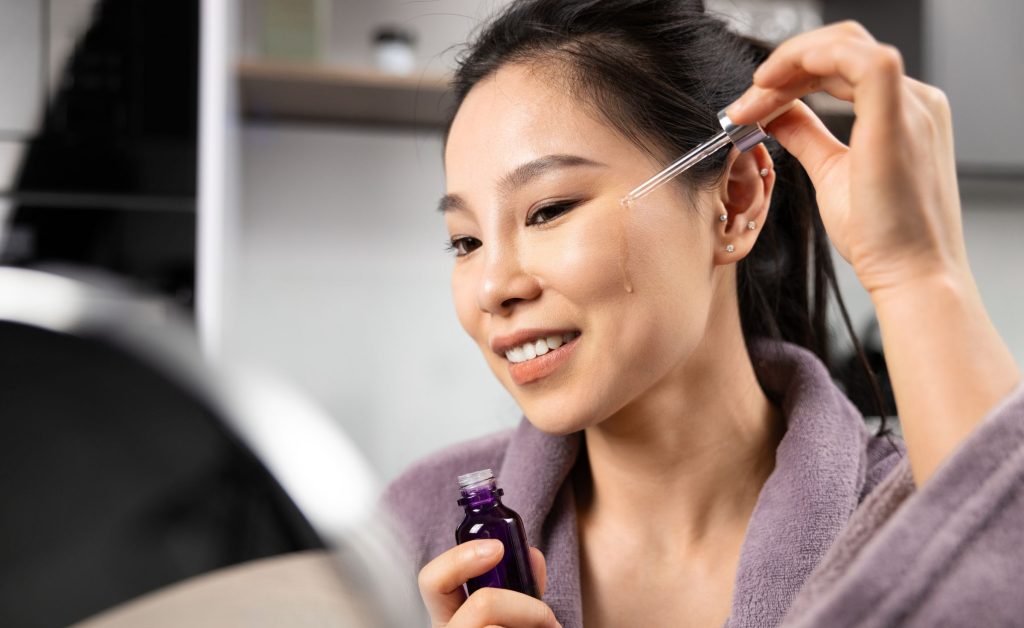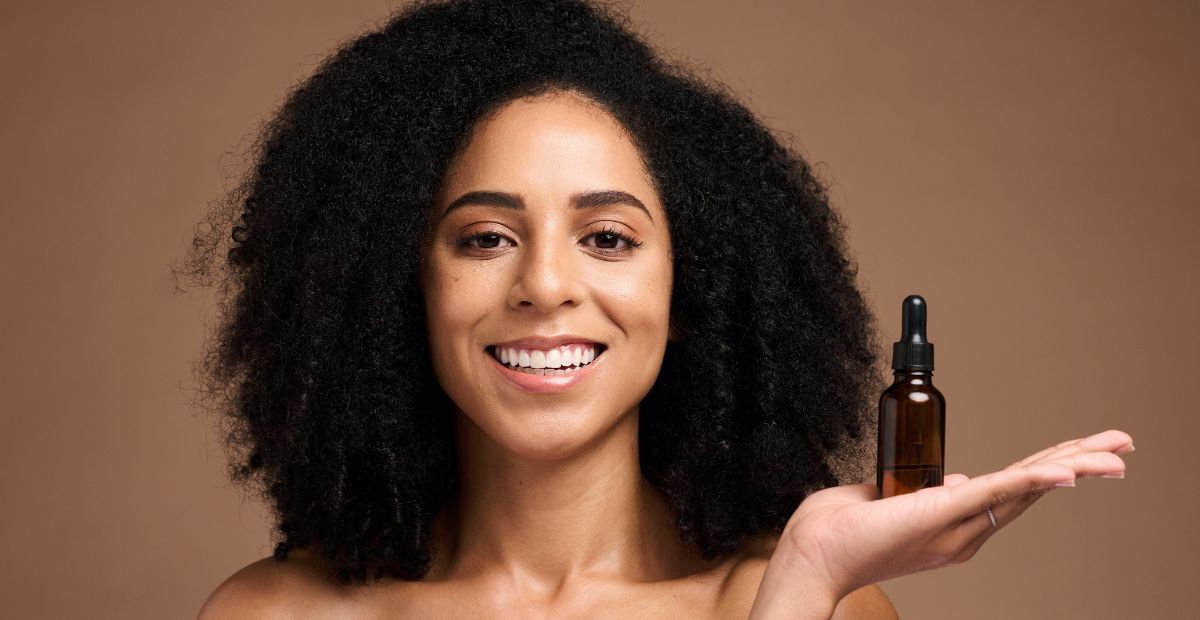What Is Retinyl Palmitate And Why It’s Your Biggest Mistake
Onskin Content Team
Your guides through the skincare chaos

There are a billion and one articles out there explaining all the reasons to use retinoids in skin care. About half of those reasons have something to do with the anti-aging effect retinoids have on the skin. We know that retinol, retinal, and a prescription-only form, tretinoin, can stimulate collagen production, speed up cell turnover, fight acne, etc. But is that true for the lesser-known form of retinol called retinyl palmitate?
Retinoids are scientifically proven and, if you use them correctly, well-tolerated anti-aging ingredients that can make your skin look fresher and plumper. The question is, why doesn’t your new retinol product do that?
Short answer: marketing. Longer answer: the wrong form of retinol.
Let’s break it down—with science.
Is Retinyl Palmitate Retinol?
So, what is retinyl palmitate? Just like retinol, it’s a form of vitamin A. It’s the ester of retinol and palmitic acid, which does make it a retinoid. You can find it on ingredient lists of over-the-counter skincare products, some sunscreens, and even foods.

But not all vitamin A derivatives are created equal—there’s a reason they all have different names. While in the retinol vs retinyl palmitate comparison, a retinyl palmitate product would be much gentler on your skin than a retinol one, it would also be far less effective.
Is Retinyl Palmitate Safe?
Much like all retinoids and their alternatives, it’s usually considered safe for use except for specific situations like pregnancy or vitamin A allergies. In some cases, frequent or improper use can also cause skin sensitivity or irritation. To make things clearer, you need to understand the differences between retinyl palmitate and other retinoids.

Let’s get a little sciency. Do you remember we mentioned that skincare products with retinol can stimulate collagen production in your skin and speed up cell turnover? To achieve that, any vitamin A derivative must convert into retinoic acid.
The less it takes for a retinoid to convert into retinoic acid, the faster it works. Let’s compare:
1. Retinyl Palmitate → Converts to retinol in skin → Converts to retinal → Slowly breaks down into retinoic acid.
2. Retinol → Converts to retinal → Converts to retinoic acid in skin.
3. Retinal → Converts to retinoic acid in skin.
4. Tretinoin (prescription only) is itself retinoic acid.
We went from three steps to two to one to zero in our retinyl palmitate vs retinol vs retinal vs tretinoin showdown. This is why retinyl palmitate products show minimal to no anti-aging benefits compared to retinol, retinal, or tretinoin. The same logic applies to its effectiveness in treating acne—there are more effective ingredients for the job.
Does It Have ANY Benefits?
Yes—but don’t expect miracles. Topical retinyl palmitate does offer some mild benefits and few side effects, so maybe wait before throwing away your not-quite-retinol skincare.

What retinyl palmitate can help with:
1. Mild antioxidant protection. As a vitamin A derivative, it can help neutralize some free radicals. Neutralizing free radicals can, in turn, improve the state of your skin by reducing inflammation.
2. Gentle hydration. Unlike its stronger counterparts, retinyl palmitate is unlikely to dry out your skin and cause irritation or trigger the infamous retinol purge.
3. Skin barrier support. Retinoids, or vitamin A and its derivatives, may help with mild irritation and repair the skin’s natural lipid barrier, making it more resilient.
See? Not all is lost for retinyl palmitate! While the evidence on its anti-aging benefits may be lacking, some studies suggest it may assist in treating sun damage and UV-induced skin aging when combined with retinol.
Please note that we do not advise you to mix any active ingredients before consulting your dermatologist!
What About Supplementation?
While the effects of topical retinyl palmitate might be underwhelming, its supplement form offers several benefits for those looking to up their vitamin A levels.
First, why would you want to supplement vitamin A? For starters, it supports many important processes in your body, including immune function, vision, and reproductive health—and this is just scratching the surface of everything vitamin A does for your health. If you are deficient, it may reflect poorly on your well-being.

One of the most popular ways to get more vitamin A is through nutritional supplementation of retinyl palmitate or beta-carotene. Both are great sources of vitamin A, but there are three major differences you might want to consider.
Retinyl palmitate vs beta-carotene
- Beta carotene comes from plants, while vitamin A esters usually come from animal products (like liver, egg yolk, fish, milk, etc.)—something to consider for those who favor plant-based diets.
- If you are vitamin A deficient, a retinyl palmitate supplement would work faster.
- Unlike beta-carotene, retinyl palmitate can cause vitamin A overdose if consumed in larger than recommended doses.
If you are taking any supplements, please follow the directions on the package!
Congratulations! You now have all the information, all the details you would ever need on the elusive retinyl palmitate. Now it’s time to dive into why all this is extremely relevant to skincare consumers like yourself.
Is Retinyl Palmitate a Marketing Ploy?
“I just won’t use it if it doesn’t work!” you might say confidently. Sure, that’s a fair position to have. And if you’re interested in tangible anti-aging benefits, retinol might be a better option for you than retinyl palmitate, anyway. There’s only one little issue.
Companies won’t tell you which one it is.

Okay, it’s not exactly like that—the ingredient list is right there, and all skincare brands are legally obligated to disclose the exact formula of each product. What they are not obligated and, therefore, do not like to do is be direct about the way they market those products. They can and will advertise their skincare as retinol.
Pick up your retinol serum or cream right now. Does the bottle say RETINOL in big letters? Probably. Now turn it around and read what the label says on the back. Chances are, you’re going to see retinyl palmitate instead of retinol on that long ingredient list. If that is the case, say goodbye to all possible anti-aging benefits actual retinol products offer you.
Why does that happen?
Cost-effectiveness. This specific vitamin A ester doesn’t degrade as quickly as retinol, which means the final product has a longer shelf life. It’s also significantly cheaper than retinol, which means lower manufacturing costs for the brand.
Bottom line: There is a place for retinyl palmitate in skincare. Unfortunately, companies choose not to be direct about the benefits their products do or do not offer. Take your time while shopping, and remember to check the fine print.
FAQ
-
Where do I start with OnSkin?
Download the app and think of a product you’d like to know more about. Then, go to the main screen and choose how you’d like to get the info —by manually looking it up in the search bar, by scanning its barcode, or by simply taking a picture of the packaging. Once you’ve done any of these, you can see how safe the product is and if it suits your skin or hair (if this analysis is available).
-
What is Safety Rating, and how is it calculated?
In OnSkin, we base product rates on ingredients. Each is closely studied by our medical team and then evaluated. This way, each product gets a score from 0 to 100, with 100 as the safest level.
Safety Levels
- Excellent (76–100)
- Good (51–75)
- Not great (26–50)
- Bad (0–25)
These scores are backed by the latest scientific studies. You can find links to the resources we’ve used on each ingredient page. To assess the safety of product ingredients, we evaluate them according to the following parameters/criteria
- Endocrine disruption risk / Reproductive toxicity
Indicates the probability of mimicking, blocking, or interfering with the body hormones.
- Сarcinogenicity
Measures the potential risk of inducing cancer.
- Allergy risk
Estimates the probability of an allergic reaction.
- High concentration alert
Determines the risk of being unsafe in certain amounts.
-
What is Skin Match?
Based on the info you input about your skin type, age, skin care goal, and other “settings,” OnSkin checks how well a product is tailored to your unique skin needs — it’s basically like a dermatologist helping you find the right products, minus the fees and the long wait. The product you’re checking might be labeled as It’s a match!, Hit-or-miss, or Not a match for you. The app also detects ingredient groups such as Anti-acne, Anti-inflammatory, Moisturizes, May be drying, Comedogenic, and others — by tapping one, you see exactly what ingredients from this or that group are in the product.
-
I seem to have a problem with using the app. Who should I contact?
Please reach out to us at [email protected], and we’ll carefully look into your issue. Your ideas for improving the app are also very welcome!
-
Do you have an Android version?
Not yet! Hey Android users, we hear you, and we're thinking about making an Android version, but we haven't started the development yet.
Tracker Sent!
It’s on the way to your inbox.




